Logic problems for children 6-7 years old help develop correct thinking and create interest in mathematical education in preschoolers.
Age characteristics
It was in the younger preschool age the foundations are being laid mental development. Logical tasks for children 6-7 years old help to fully prepare them for their future life. Mental activity, as well as the processing and comprehension of information offered in tasks, contribute to the formation of certain ideas, as well as the acquisition of generalized and specific knowledge. The acquired skills will help children find the right solution in various life situations.
Where to start?
We offer ready-made logic problems for children 6-7 years old with answers. The child is offered pictures that depict: a bus, a scooter, a bicycle, a car. It is necessary to determine the vehicle that is superfluous in the proposed list.
Problem 1: solution
The answer is a bicycle. The point of the task is that to travel by bus, car, scooter, you need fuel, so they can be classified as one group. When moving on a bicycle, a person’s muscular strength is sufficient, so this means does not fit into the general list.
Such logical tasks for children 6-7 years old not only develop thinking, but also form the horizons of preschoolers. Children master skills colloquial speech, reason freely, speak, plan their activities, ask questions, and draw logical conclusions.
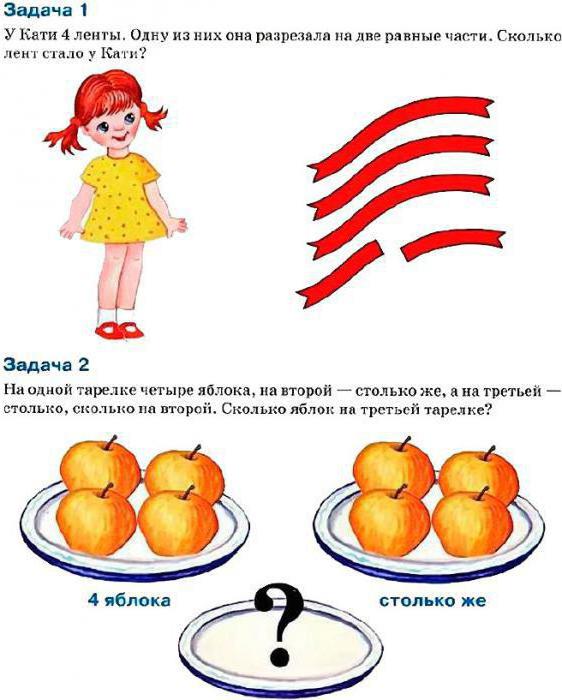
Problem 2
There are also logic puzzles with a trick for children, which are aimed at developing the imagination of the younger generation. Petya is weaker than Kolya, but stronger than Misha. Which of the guys is the weakest?
Answer: Misha.
To resolve this, a comparison needs to be made between Misha, Kolya, and Petya. Kolya is the strongest, therefore Misha will be the weakest.
Psychologists call a variety of logical tasks for 6-year-old children the right direction for children’s development, which does not bring problems with their physical and mental state. Experts advise starting with simple tasks, gradually increasing their level of complexity.
Problem 3
We offer logical problems with answers for children, which adults will also have to think about.
There are as many blue parrots in the zoo as there are yellow birds. The number of red and blue parrots is the same; how many birds are there in the zoo if there are three red parrots?
Answer: 9 parrots.
In order to cope with this mathematical problem, you need to carefully listen to its condition. Since the number of all birds is the same, therefore, red, blue, yellow birds together will be nine birds.
By solving such a task, the child gains the skills of analysis and synthesis, comparison, learns to organize his actions, and navigate in space.

Types and examples of logic problems
Subject problems can be offered during tabletop or didactic games. For example, the guys must choose one item from the proposed list geometric shape, color, size. Such tasks perform a specific function - teaching the child to complete a given task, strive for results, the ability to find his mistakes, and correct them:
- 1st task. A chicken weighs two kilograms on one leg, how much will it weigh on two legs? (2 kg).
- 2nd task. Two dads, two sons, as well as a grandfather and grandson came into the cafe. How many men were in the cafe? (three).
- 3rd task. The family has five sons. Each has one sister. How many children are in this family? (Six).
- 4th task. Four girls played with dolls for an hour. How many hours did each girl play? (one hour).
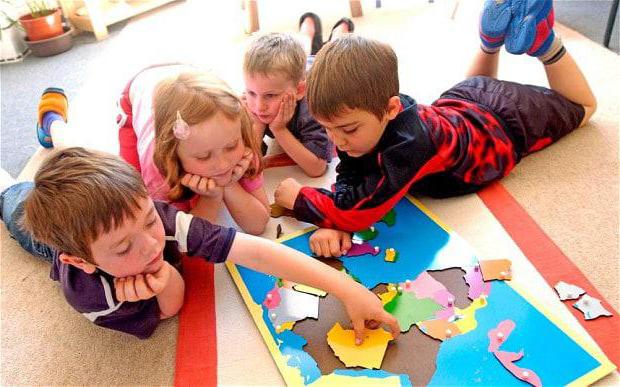
Verbal tasks
Such tasks for the development of logical thinking for children can be of different topics:
Task 1. Kids must guess the description of pets or identify the animal based on the listed external signs.
Task 2. Five cones and four bananas grew on a pine tree. How many bananas are left if all the pine cones have fallen?
The guys who have developed creative thinking understand that bananas cannot grow on a pine tree, so they answer that there will not be a single fruit left on a pine tree.
Children solve logical problems much faster than adults; they are more likely to use logic and imagination.
Task 3. Masha lit six candles, and a little later extinguished 3. How many candles does the girl have left? (3 pieces, since the rest were completely burned).
Task 4. Seryozha broke a wooden rod into 3 parts. How many breaks did he make? (Two).
Psychologists are convinced that it is diversity that contributes to the formation harmonious personality child, therefore such exercises are included in the programs according to the new federal educational standards preschool education. Only when using educational tasks and games can we talk about the formation of the younger generation with full-fledged logical thinking.
Varied finger games help to activate brain activity, stimulate the formation of speech skills, develop fine motor skills, and have a positive effect on creative activity. For example, you can offer children dramatizations of fairy tales and stories using their fingers.
The success of schooling directly depends on the ability to solve logical mathematical problems for children in preschool age.
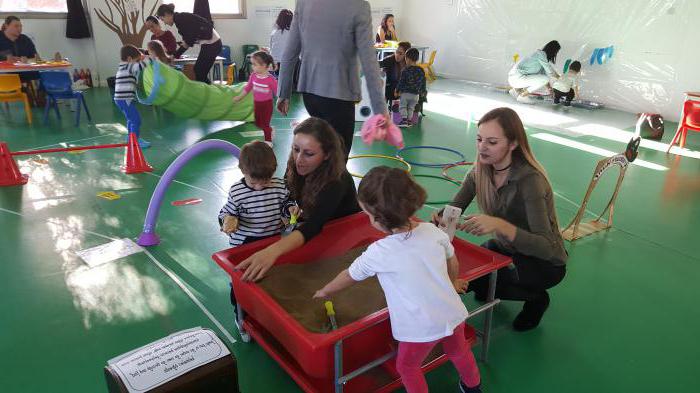
Task 5. Where can you jump from, but where can’t you jump? (On the plane).
Task 6. Seryozha found himself in a room in which there was a gas stove, a candle, and a kerosene lamp. What should a boy light first? (A match).
Task 7. What can Masha see with her eyes closed? (Dreams).
Task 8. Maxim saw the “little green man”. What should the boy do? (Cross the road when the traffic light is green).
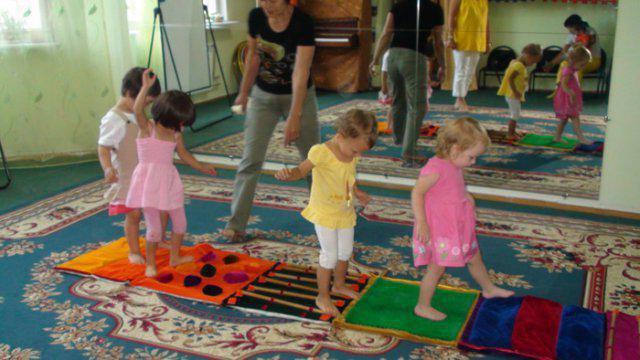
Conclusion
In preschool age, play is used as the main activity. It promotes the rapid assimilation of skills, knowledge, concentration, and memory development. It is towards the end of the preschool period that the formation of verbal and logical thinking begins. It is associated with the development in children of the ability to use words, analyze and perceive the logic of reasoning. In order for a child not to have problems with social adaptation, it is necessary to pay attention to special attention the formation of his logical thinking.

Psychologists identify three types of conversations that contribute to the formation of logic in preschoolers. Introductory classes are designed to familiarize children with objects, phenomena, and processes. The main objective of this form of work is to obtain new knowledge and generate interest in the upcoming activity.
They are short-term, emotional, and without them the development of mathematical logic is impossible. The second version of the conversation involves the teacher asking questions, in order to find answers to which the child will have to engage in active mental activity.
Work is built on the basis of mobilization children's attention, thinking, memory. The child constantly monitors the progress of the conversation, looking for answers to questions asked by the teacher. Heuristic conversations are suitable for older preschool age. For example, a conversation can be concluded with a riddle or a proverb that stimulates the subsequent activities of preschoolers. When building a conversation, it is important to update the experience that children have and direct them to the upcoming mental activity. For example, during a heuristic conversation, the teacher identifies contradictions that children are forced to resolve.
Preschool age is the most important point in the formation of a logical and ecological culture. At this time, the foundations of personality are being laid, including a positive and caring attitude towards living nature and the people around us.
Logical tasks that help a preschooler learn and understand the phenomena and processes occurring in living nature contribute to the development of an emotional and value-based attitude towards plants and animals, and an awareness of the connection with the living world.
At this age, children are happy to engage in the process of solving logical problems; the main thing is to make the activity interesting and exciting.
At the age of seven, the basic knowledge of mathematics is laid down, which a person needs throughout his life. In order for the child to learn the basics of this exact science, teachers use various techniques, games, logical problems, mathematical riddles and even poetry.
A seven-year-old child receives basic mathematical knowledge at school or preparatory group kindergarten, but not every baby has mathematical mind intelligence and is able to immediately master this complex science. Therefore, if a child experiences difficulties during school, parents should make every effort to make mathematics clear and interesting to him. Then the little one can easily cope with any task assigned.
Guided by the recommendations of research psychologists Yu. M. Gorwitz, T.D. Martsinkovskaya, S.L. Novoselova, etc., we draw your attention to effective method teaching seven-year-old children mathematics is the use of computer game programs, developed on the basis of an intellectual structure play activity preschoolers or schoolchildren primary classes. Computer math games develop in every child:
- mathematical representations
- thinking: classification and seriation
- attention
- spatial imagination
- ability to relate number to number
They also help reinforce the concept:
- sizes (large, small, low, high, short, long),
- geometric shape (circle, square, rectangle),
- color spectrum
Computer games can be downloaded from the Internet or purchased a licensed disc.
Another effective method for children aged 7-8 years to learn mathematics is to solve entertaining exercises. They happen different types and difficulties, but all are aimed at reducing fatigue, intensifying mental activity, developing logic, memory and attention. Such tasks for 7-year-old children can be effectively used outside of class time or at any stage of the lesson: at the beginning - to warm up thoughts, in the middle - as an oral mathematical warm-up, or at the end of the lesson - for reflection. The most important thing is that students complete all tasks with great pleasure and show a storm of positive emotions if the decision is correct.
As literature where you can find such tasks, we suggest purchasing books by K. S. Gromkova entitled “Logic for 7-year-old children,” “Young Mathematician.”
For example, let us present to your attention logical problems for 7-year-old children with the completion of a logical expression:
If Petya left the house later than Vasya, then Vasya.../left the house before Petya
If one is less than two, then two.../more than one
If Sasha is older than Masha, then Masha.../smaller than Sasha
If the stream is shallower than the river, then the river is.../deeper than the stream.
Mathematics for 7-year-old children can be interesting if they are asked to solve problems in verse. For example:
The goat brought it for the kids
Many, few - 10 branches
Help for two
Decks divide the branches! (5 branches each)
An interesting method for learning mathematics is magic squares.
The essence of this exercise is for the child to fill in the empty cells, but not just like that, but by completing a specific task. For example, adding each column and row should result in 10.
Answer: 1st row - number 2; 2nd row - number 3; 3rd row number - 5;1.
Answer: 1st row - number 1; 2nd row - number 5;1;4; Row 3 - number 3.
Read more:
What to do with children at home winter time year?!
On intelligence for older preschoolers1. Seven brothers have one sister. How many sisters are there?
(One)
2. Two mothers, two daughters and a grandmother and granddaughter. How many are there?
(Three: grandmother, mother and daughter)
3. There are three apples in the basket. How to divide them between three children so that one apple remains in the basket?
(Give one along with the basket)
4. One and a half pike perch cost one and a half rubles. How much do three zander cost?
(3 rubles)
5. Five candles were burning in the room. Two candles were extinguished. How many are left?
(Two, the rest burned)
6. You can jump off it while moving, but you cannot jump on it while moving. What is this?
(Airplane)
7. Born twice, dies once.
(Chicken)
8. Liquid, not water, white, not snow.
(Milk)
9. What grows upside down.
(Icicle)
10. Who can’t be lifted off the floor by the tail?
(Ball of thread)
11. The pencil was divided into three parts. How many cuts were made?
(Two)
12. Five knots were tied on the rope. How many parts did these knots divide the rope into?
(At 6)
13. When can you cut your hand on water?
(If you turn it into ice)
14. Is it possible to fill an empty bucket three times in a row without emptying it once?
(Yes: large stones, sand, water)
15. You entered a dark room where there is a candle, a gas stove, and a kerosene lamp. What will you light first?
(Match or lighter)
16. The predictor undertakes to predict with 100% accuracy the score of any match before it begins. What is the secret of his unmistakable prediction?
(Before the start of the match the score is always 0:0)
17. Is it possible to throw a ball so that, after flying for some time, it stops and starts moving in the opposite direction?
(Yeah, throw it up)
18. How to transport a wolf, a goat and a cabbage from one shore to another if one person (the carrier) can fit in the boat, and with him either a goat, or a wolf, or a cabbage?
(First transport the goat, then the cabbage, and on the return trip take the goat, leave the goat on the opposite bank, transport the wolf, return for the goat)
19. Two boys played checkers for two hours. How long did each of them play?
(2 hours each)
20. The two went and found five nails. If four go, how many will they find?
(Not a single one, everyone has already been found)
21. One man has four sons and each of them has sister. How many children does he have?
(Five people)
22. Six trees grow near the post office: pine, birch, linden, poplar, spruce and maple. Which of these trees is the tallest and which is the shortest, if it is known that the birch is lower than the poplar, and the linden is higher than the maple, the pine is lower than the spruce, the linden is lower than the birch, and the pine is higher than the poplar?
(Spruce, pine, poplar, birch, linden, maple)
23. Which is heavier: a kilogram of cotton wool or half a kilogram of iron.
(1 kg cotton wool)
24. Kolya and Sasha bear the surnames Shilov and Gvozdev. What surname does each of them have if Sasha and Shilov live in neighboring houses?
(Kolya Shilov and Sasha Gvozdev)
25. Two fathers and two sons, and a grandfather and grandson were walking down the street. How many people were walking down the street?
(Three)
26. There were sweets on the table. Two mothers, two daughters, and a grandmother and granddaughter each took one piece of candy. How many candies were on the table?
(Three)
27. When a goose stands on one leg, it weighs 7 kg. How much will a goose weigh if it stands on two legs?
(7 kg)
28. In the running competition, Yura, Grisha and Tolya took prizes. What place did each of them take if Grisha took neither second nor third place, and Tolya did not take third?
(Grisha – 1, Tolya – 2, Yura – 3)
Games to develop logic for preschoolers of the preparatory group
Game "Flowers in Flowerbeds".
Target:
: multi-colored cardboard, scissors.
Description: The teacher cuts out three flowers of red, orange, blue and three flower beds from cardboard - round, square and rectangular. Invite the child to distribute the flowers in the flower beds in accordance with the story: “Red flowers grew neither in a round nor in a square flower bed, orange flowers did not grow in a round or rectangular flower bed. Where did what flowers grow?
Logic problems.
Target: develop attention and logical thinking.
Description: The teacher invites the children to play logic problems; chips are given out for each correct answer. Whoever has more chips wins.
1) There are objects in front of Cipollino: a bucket, a shovel, a watering can. How to make the shovel go to the extreme position without moving it? (You can place the watering can in front of the shovel or in front of the bucket.)
2) Winnie the Pooh, Tigger and Piglet cut out three flags different colors: blue, green, red. The tiger was not carved by a red one, and Winnie the Pooh was not a red or blue flag. What color flag did each person cut out? (Winnie the Pooh cut out a green flag, Tigger - blue. Piglet - red.)
3) There are four apples on the table. One apple was cut and put back. How many apples are on the table? (4 apples.)
4) Arrange two chairs in the room so that there is a chair against each wall. (You need to place chairs in two opposite corners.)
5) Fold a triangle from one stick and a square from two sticks on the table. (You need to put the chopsticks on the corner of the table.)
Game "I made a wish...".
Target
Description: The teacher makes a wish for an object. Invite the child to find out the name of the object using clarifying questions.
Does this item fly? (Yes.)
Does he have wings? (Yes.)
Does he fly high? (Yes.)
Is he animated? (No.)
Is it made of plastic? (No.)
Made of iron? (Yes.)
Does it have a propeller? (Yes.)
Is this a helicopter? (Yes.)
Game "Choose the right one."
Target: develop logical thinking.
Description: Children are offered options that contain extra positions, for example:
The boot always has: a buckle, a sole, straps, buttons.
In warm regions live: bear, deer, wolf, penguin, camel.
Winter months: September, October, December, May.
In a year: 24 months, 12 months, 4 months, 3 months.
A father is older than his son: often, always, rarely, never.
Time of day: year, month, week, day, Monday.
A tree always has: leaves, flowers, fruits, roots, shadow.
Seasons: August, autumn, Saturday, holidays.
Passenger transport: combine harvester, dump truck, bus, diesel locomotive.
This game can be continued.
Game “I take it with me on the road.”
Target: develop logical thinking.
Game material and visual aids: pictures with images of single objects.
Description: Place images face down. Invite your child to go on a sea voyage. But in order for the trip to be successful, you need to thoroughly prepare for it and stock up on everything you need. Ask your child to take one picture at a time and talk about how this item can be useful. The objects in the pictures should be very different. For example, a child takes out a picture of a ball: “The ball can be played while resting, the ball can be used instead of a lifebuoy because it does not sink, etc.” You can play out various situations: on a desert island, on a train, in a village.
Game “How are they similar and how are they different?”
Target: develop logical thinking.
Description: The presenter offers the children two objects; the children must compare them and indicate the similarities and differences. For example: plum and peach; little girl and doll; bird and plane; cat and squirrel; an orange and an orange ball of the same size; felt-tip pen and chalk.
Game "Resettled the birds."
Target: develop logical thinking.
Game material and visual aids: 20 cards with images of birds: domestic, migratory, wintering, songbirds, birds of prey, etc.
Description: invite the child to place the birds in nests: in one nest - migratory birds, in another - all those who have white plumage, in the third - all birds with long beaks. Which birds were left without a nest? What birds can be placed in several nests?
Game "Associations".
Target: develop logical thinking.
Description: children are divided into two groups. One group invites the other to talk about an object, using words denoting other objects in their story. For example, talk about carrots using the words: duck, orange, cube, Snow Maiden. (It is the same color as an orange. You can cut it into cubes. Ducks love the top part of it. If you don’t eat it, you will be as pale as the Snow Maiden.) Then the groups change roles. The subject to be described and the words-characteristics are set by the presenter.
Game "Come up with a proposal."
Goals: develop logical thinking, speech activity; develop a sense of language.
Game material and visual aids: ping pong ball.
Description: The teacher sits with the children in a circle and explains the rules of the game. He says some words, and the children come up with a sentence using this word. For example: the teacher calls the word “close” and passes the ball to the child. He takes the ball and quickly answers: “I live close to the kindergarten.” Then the child says his word and passes the ball to the person sitting next to him. So, in turn, the ball passes from one player to another.
When sending their child to school, parents strive to teach their child to count and read. However, primary school teachers note that every second child is not able to think correctly, build logical chains, or make assumptions. This all arises from the fact that parents do not pay due attention to the development of logical thinking in children. Here we will talk about the characteristics of children 6-7 years old, as well as tasks for children 6-7 years old to develop logical thinking.
What is logical thinking
Logic is a science that studies the methods and forms of thinking. At the same time, logical thinking is a special type of thinking that uses certain logical rules, structures and concepts.
In children logical thinking is developed as a result of imaginative thinking. Such thinking is the highest point in the purity and logic of a child’s thoughts. The path to this point is not easy and long, which requires high mental activity and enormous knowledge.
The development of logical thinking in a child is a rather complex process., which covers many different cognitive functions and includes a variety of activities. This is the ability to explain complex things to a child in a simple language that he understands, teach him to establish relationships, teach him to evaluate a situation and draw conclusions from it. But not all parents know how to do this correctly.
When we were growing up, no one read smart books on psychology and child development. Our parents simply talked to us like adults, explaining everything that was happening around us. We counted cars of the same color, the same make, observed insects, birds, animals, and absolutely everything was commented on by our parents.
Nowadays, parents strive to earn more money and climb up the career ladder; children are left to their own devices or disappear behind their tablets, “conquering” boundaries online games. All the logic of children comes down to being able to turn on the gadget.
Features of logic and thinking in children 6-7 years old
A child cannot develop his logical thinking on his own. In preschool age, psychologists and teachers recommend helping the child develop thinking and logic. But here you need to be able to interest the baby. A phrase like “now we will develop your logic son/daughter” will not lead to anything good. The child is unlikely to be happy about this prospect. For classes to have the desired effect, they must be carried out in game form.
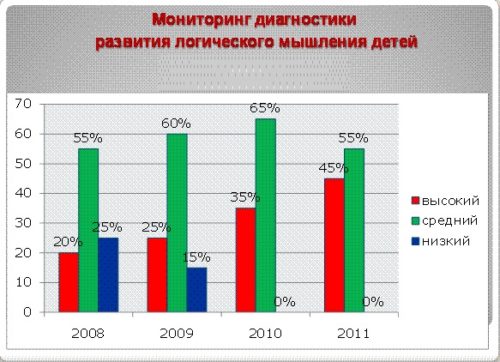
At the age of 6-7, children imagine the world differently from adults. In the preschool period and primary school, the active development of verbal and abstract thinking begins. Children quite consciously establish the relationship between causes and effects; their thinking at this age is very flexible. Preschoolers can easily adapt and move from one activity to another without losing attention or concentration. But again, it should be mentioned that, firstly, teaching a child logical techniques is possible only in a playful way, and secondly, the duration of the lesson should be within 20-30 minutes.
Types of logic games for children 6-7 years old
Today there is a huge variety of games for developing logic in preschoolers. All of them can be divided into several categories:
- graphic games– these games are aimed at development fine motor skills and preparing a child's hand for writing, which, according to teachers, is the most difficult subject for primary school students;
- math games– such games are fundamental in the development of logic and intelligence in a child, the formation of his skills, abstract thinking, and logic;
- speech games- these are games for the development of the speech apparatus, purity and clarity of speech, diversify vocabulary child. They are especially good for children who have any speech defects and need the help of a speech therapist;
- puzzles and board games– such games arouse great interest in the child. According to psychologists, this best games on the development of thinking and logic, the formation of teamwork skills, in communicating with other children;
- literature with game tasks. On the one hand, this is good way to accustom a child to reading and knowledge of the world precisely through reading, and on the other hand, this contributes to the direct development of logic, memory, and attention;
- games on the computer and various electronic devices are the favorite games of modern children, to the great regret of psychologists and teachers. But there is undoubtedly a plus in this. If in a computer game, in addition to useless “adventure” and “shooter” games, there are any tasks - quests, then by completing them, the child also receives useful experience.
True, you cannot use only computer games for activities with your child. This will have a bad effect on his health (his vision will deteriorate, his posture will be disrupted), and will also lead to the occurrence of. Allowable time to work for computer gadgets at 6-7 years old it is regulated by pediatricians and is up to 30 minutes a day.
Graphic games to develop logic
TO graphic games can include any activities with writing objects: a pencil in the cells (the so-called graphic dictation), coloring pictures with digital color schemes, drawing by dots and much more.
Graphic dictation can be written with your child at home. For such a game you only need a pencil and a piece of squared paper, preferably large. A certain algorithm is dictated to the child, for example, draw 3 cells up, 8 cells to the right, 5 cells down. If the task is completed, correctly, as a result, the child will see various figures on a sheet of paper. The resulting figures can be colored.
Such dictations help orientation in space and perfectly prepare the hand for writing. 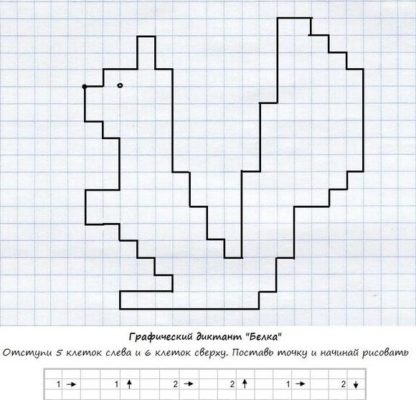
Graphic games also include connecting dots by numbers, continuing a pattern, various types coloring books and copybooks - all these tasks help develop not only logic, but also concentration.
There are many similar tasks on the Internet. In order to interest the child in activities with graphic tasks, you can select pictures in which it is not immediately clear what will ultimately be depicted in the picture. For example, completing the “color by numbers” task is much more interesting when the outlines of the picture are not outlined. By coloring fragment after fragment, the child will have time to think about what exactly can be encrypted in this or that task.
Speech games to develop logic
During speech logic games, children learn to explore and analyze information received by ear. For example, an adult says two words out loud, a preschooler must name their differences: orange and banana, spring and summer, day and night, butterfly and bird, etc.
You can ask your child to make up stories based on the pictures. In this case, it is necessary to monitor the sequence (logicality) of the story; if there is difficulty, the child should be helped. 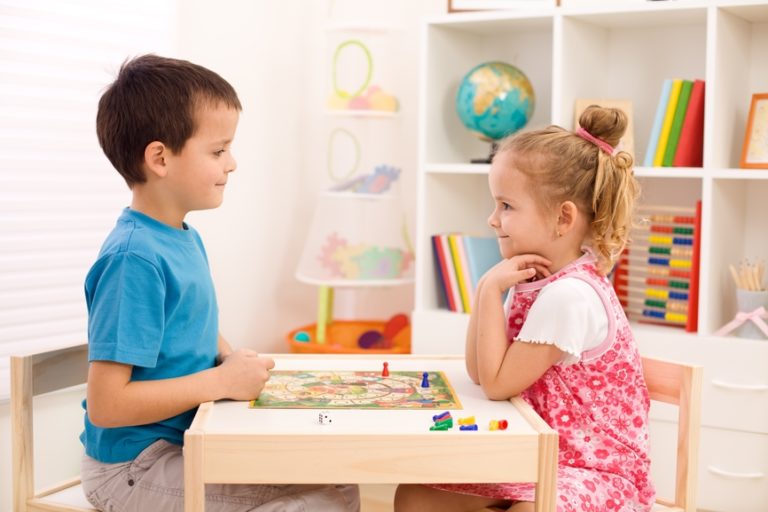
Games for recognizing objects based on certain characteristics are quite effective. It is necessary to ask the child to name the object that the adult is talking about. For example, it is yellow, elongated and sweet (banana); it is green, striped, edible (watermelon); red-haired, cunning, lives in the forest (fox), etc. In this way, the child not only guesses words and objects, but also remembers new words, develops associative memory, and learns to describe objects by their qualities and properties.
You can also ask the preschooler to name words with opposite meanings, for example, cheerful - sad.
Example words:
- heavy - light;
- white – black;
- smart - stupid;
- hard – soft;
- cold – warm;
- clean – dirty;
- empty – full;
- long – short;
- light – dark.
Or name synonyms for the named words (for example, small - low, short, small, etc.).
An excellent game for the simultaneous development of logic and speech consists in naming words that are opposite in meaning:
“The mouse squeaks quietly, and the dog barks (loudly)”;
“The cat is well-fed, and the wolf is (hungry);
“One boot is clean and the other (dirty);
“For porridge the plate is shallow, and for soup it is (deep);
“Lemon is sour, and orange is (sweet).
It is very useful to teach children to solve logical problems by ear, for example: “Which is lighter, a kilogram of stones or a kilogram of cotton wool?”, “Vasya is taller than Sasha, but shorter than Alyosha. Who is taller, Sasha or Alyosha?
Board logic games and puzzles
- a great way to develop not only logical thinking, but also perseverance. Children learn to think and plan, think through every move and formulate a strategy for action.
Today, manufacturers of children's goods offer a huge selection of such games, among which we can highlight games such as bricks or corners, where you need to put together a certain given figure according to a pattern made from bricks. Similar to the game of bricks, you can highlight the game of forfeit - where you need to try to build a tower, pulling out one block at a time, while trying to maintain balance. TO board games Can also include lotto and dominoes. 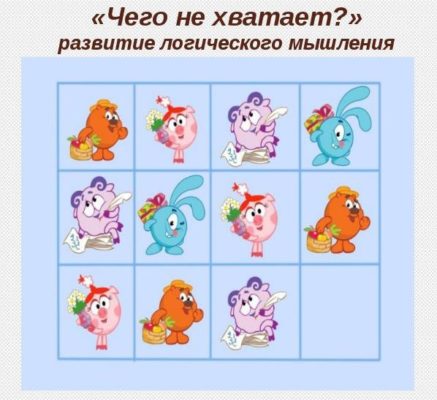
Among all the available games from improvised means, one can also include games with matches: for example, ask the child to solve simple problems using them:
- fold 2 triangles from five matches;
- fold 16 matches into 5 squares and ask the child which 4 matches need to be removed so that 3 equal squares remain;
- You can simply give your child a box of matches and ask them to put all the letters of the alphabet or different words together.
However, when using materials such as matches, it is important to conduct preventive conversation about the rules fire safety. It is best to use counting sticks instead of matches.
Puzzles– these are also exciting and useful games for the development of logic. Among such games we can highlight a logic ball - a labyrinth - this is a sphere consisting of labyrinths and paths through which you need to guide the ball in different ways. This game perfectly develops perseverance and logic. Puzzles also include the classic Rubik's cube. At 6-7 years old, children, as a rule, are already able to assemble it.
Books with games to develop logic
Bookstores offer a wide selection of child development topics that are simply mind-boggling. Navigating such a choice is not always easy. However, in matters of child development, it is best to trust well-known psychologists and teachers. For example, the book by I.V. Maltseva “Logic for preschoolers”, book by O.S. Zhukova “Training logic and thinking”, workbooks by E. Bortnikova “Developing attention and logical thinking”. You can develop your child using these books even at home; the tasks in them are simple, understandable and interesting. 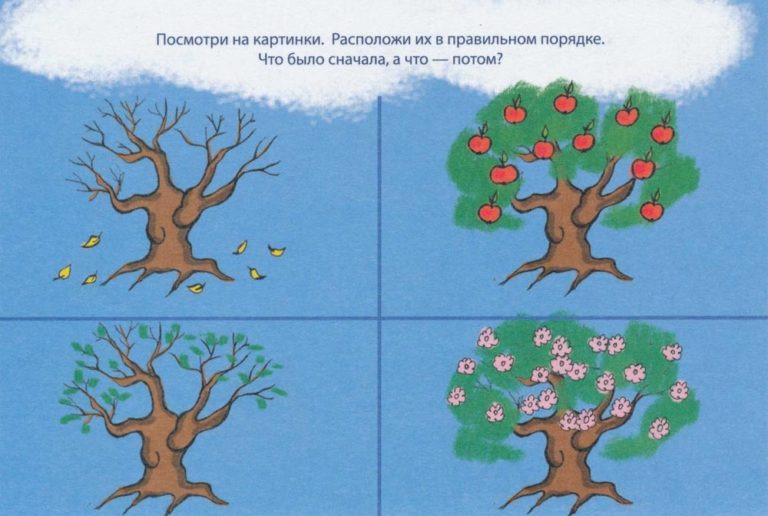
Computer games to develop logic
Computer games- This new look child development. The use of computer technology in the process of teaching children is normal.
Among the educational games we can highlight such computer games as “Frivolous Lessons. Logic and attention", "Luntik". We train memory and attention”, “Baba Yaga and Prosha” and many others. You can also find a great variety of online games on the Internet. 
TO negative consequences passion for computer games can also be attributed to the inhibition of the development of social relationships, so we repeat. Computer activities should be strictly time regulated. At the same time, we must not forget that games, in addition to their entertainment function, also have a cognitive function. Therefore, you need to approach the choice of games for your child wisely.
Instead of a conclusion
The development of logical thinking begins in childhood and continues throughout a person’s life. The task of parents is to show support and direct his hobbies and abilities in the right direction.. Children aged 6-7 years, although already older, will never give up any exciting games. For preschoolers game exercises- This best way knowledge of the world and surrounding reality. Game activities contribute to the development in the child not only of certain logical relationships, but also to the development interpersonal relationships during the game. The child learns not only to follow the rules of the game and win, but also to lose, which helps strengthen his character.



